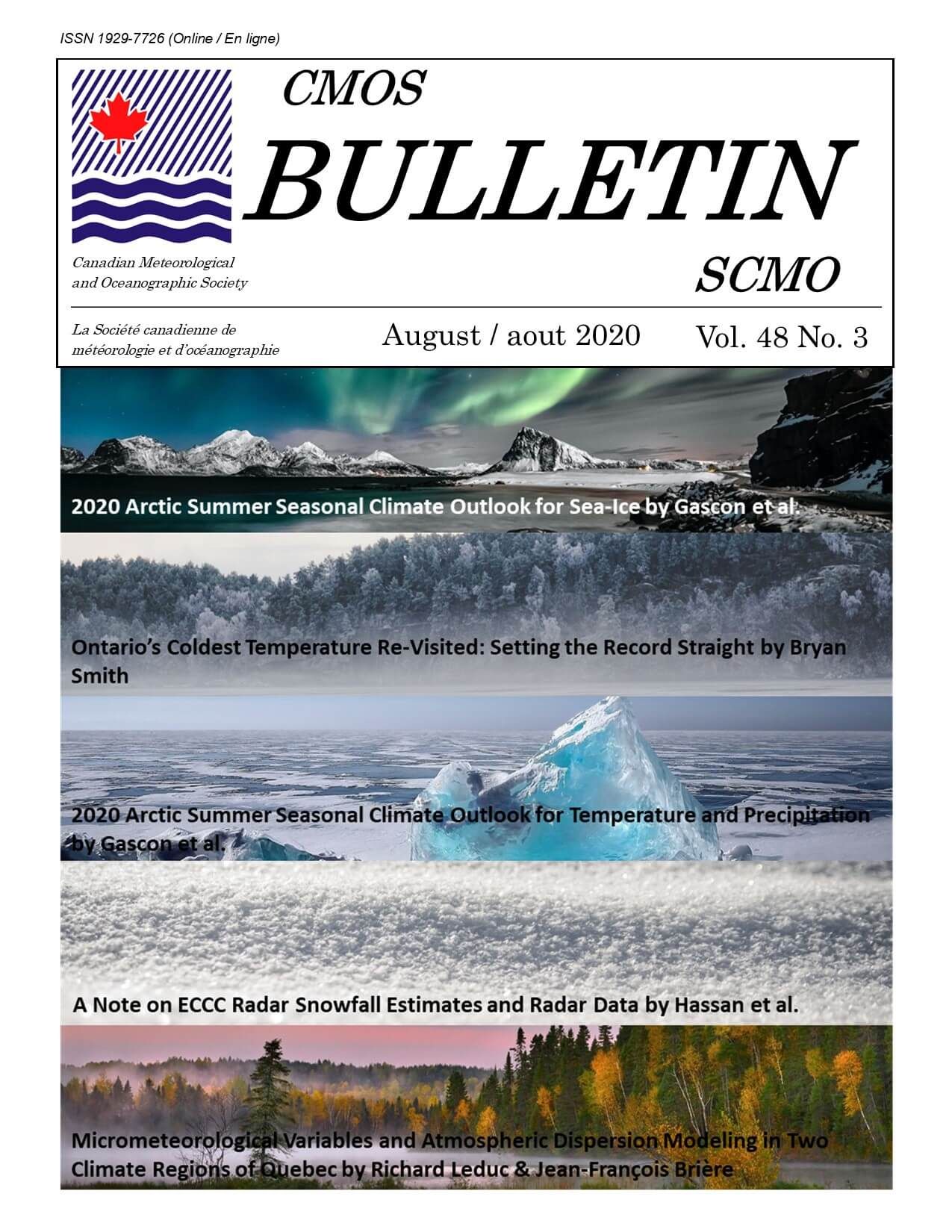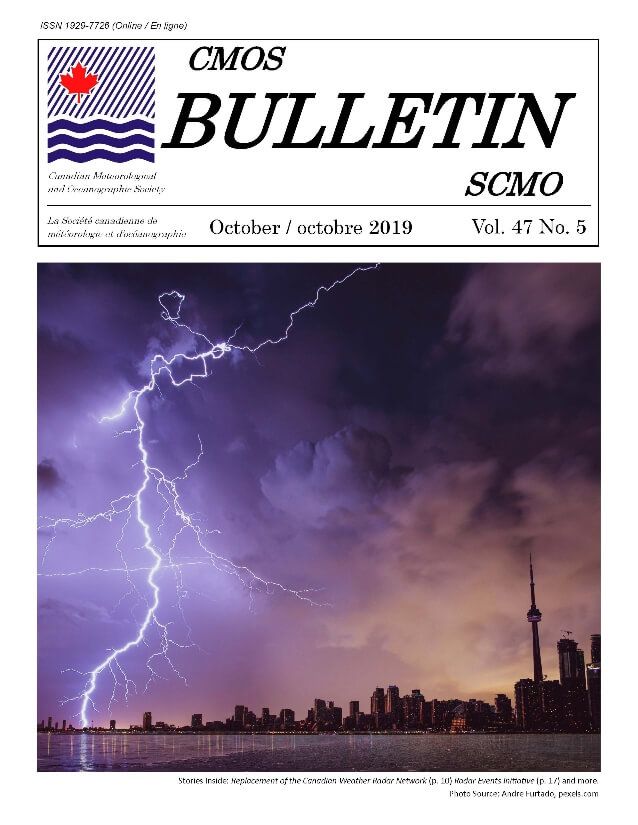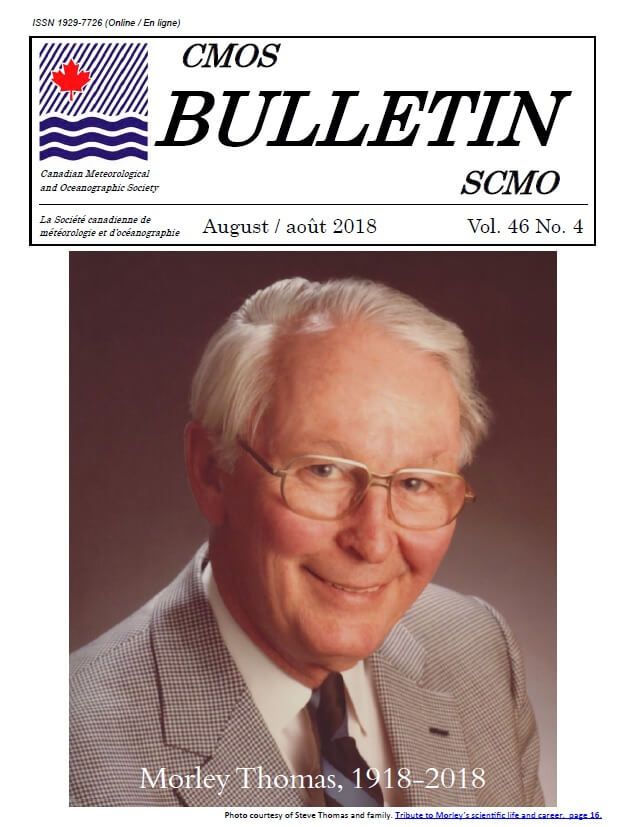Tag: Richard Leduc
Micrometeorological Variables and Atmospheric Dispersion Modeling in Two Climate Regions of Quebec
– By Richard Leduc, Ph.D., AirMet Science Inc., and Jean-François Brière, Ministère de l’Environnement et de la Lutte contre les changements climatiques
The US-EPA (2019a) AERMOD...
Comparison of wind forecasts and observations at Lake Saint-Charles, Quebec: Results from 2018
– By Richard Leduc, AirMet Science Inc –
In a recent CMOS Bulletin (Vol 46, No 4), the results of the comparison between the wind forecasts from the high resolution deterministic...
Climate in the Age of Empire: Weather Observers in Colonial Canada
– Review by Richard Leduc, Ph.D., AirMet Science Inc., rleduc@airmetscience.com –
By Victoria C. Slonosky, Published by the American Meteorological Society, paperback, 288 pages, ISBN...
Using Back-Trajectories to Trace the Origins of Fine Particulate Matter (PM2.5)
– By Jean-Philippe Gilbert, Richard Leduc, and Nathalie Barrette, Geography Department, University of Laval –
Air pollution in the province of Québec, Canada is monitored daily to...
Comparison of wind forecasts and observations at Lake Saint-Charles, Quebec
– By Richard Leduc and Maude Chartrand, Geography Department, Université Laval –
Lake Saint-Charles is the main source of drinking water for nearly 300,000 citizens of Quebec City’s...
Weather: A Very Short Introduction
– Review by Richard Leduc, Ph.D., AirMet Science Inc. –
By Storm Dunlop, Oxford University Press, Hardcover, 144 pages, ISBN 978-0-19-957132-4, $11.95
This book is part of the “Very...








